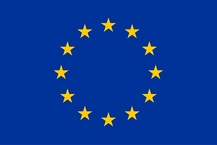Informationstechnik - Sicherheitsverfahren - Verschlüsselungsalgorithmen - Teil 2: Asymmetrische Chiffren Information technology - Security techniques - Encryption algorithms - Part 2: Asymmetric ciphers
Informationstechnik - Sicherheitsverfahren - Verschlüsselungsalgorithmen - Teil 2: Asymmetrische ChiffrenInformation technology - Security techniques - Encryption algorithms - Part 2: Asymmetric ciphers |
| Shortname | ISO/IEC 18033-2:2006-05 |
|---|---|
| Dokumentnummer | 18033-2 |
| Ausgabedatum | 2006-05-00 |
| Erwerb bei | https://www.vde-verlag.de/iec-normen/213871/iso-iec-18033-2-2006.html |
| Internationales Gremium | ISO/IEC JTC 1/SC 27 |
| Thema | Algorithmen , Sicherheitsverfahren , Verschlüsselung |
| Sektor | Informationstechnik und Telekommunikation |
| Branche | Informationstechnik |
| Level of Abstraction | 1 |
- Einführungsbeitrag (short) EN:
ISO/IEC 18033-2:2006 specifies encryption systems (ciphers) for the purpose of data confidentiality. The primary purpose of encryption (or encipherment) techniques is to protect the confidentiality of stored or transmitted data. An encryption algorithm is applied to data (often called plaintext or cleartext) to yield encrypted data (or ciphertext); this process is known as encryption. The encryption algorithm should be designed so that the ciphertext yields no information about the plaintext except, perhaps, its length. Associated with every encryption algorithm is a corresponding decryption algorithm, which transforms ciphertext back into its original plaintext. An asymmetric, i.e. public-key, encryption scheme allows a sender to use a recipient's public key to transmit an encryption of a message to the receiver, who can use his secret key to decrypt the given ciphertext, thereby obtaining the original message. Such a scheme should be secure in the sense that no information about the message should be leaked to a (resource-bounded) attacker, even if that attacker mounts a so-called 'chosen ciphertext' attack, in which he may obtain decryptions of other ciphertexts. This is the strongest type of attack that has been proposed for a public-key encryption scheme. ISO/IEC 18033-2:2006 specifies the functional interface of such a scheme, and in addition specifies a number of particular schemes that appear to be secure against chosen ciphertext attack. The different schemes offer different trade-offs between security properties and efficiency.
- Anmerkung:
Geändert durch ISO/IEC 18033-2 AMD 1 (2017-11)
- ISO/IEC 10118-2 (2000-12)
- ISO/IEC 10118-3 (2004-03)
- ISO/IEC 18033-3 (2005-07)
- ISO/IEC 9797-1 (1999-12)
- ISO/IEC 9797-2 (2002-06)
-

Transnational Branche: Informationstechnik
Ergebnis 6RICHTLINIE (EU) 2016/1148 DES EUROPÄISCHEN PARLAMENTS UND DES RATES vom 6. Juli 2016 über Maßnahmen zur Gewährleistung eines hohen gemeinsamen Sicherheitsniveaus von Netz- und Informationssystemen in der UnionRL 2016/1148/EU - NIS-Richtlinie
Einzelne Vorschriften
Alle, insbes. Art. 14-16

Transnational Branche: Informationstechnik
Ergebnis 7VERORDNUNG (EU) 2016/679 DES EUROPÄISCHEN PARLAMENTS UND DES RATES vom 27. April 2016 zum Schutz natürlicher Personen bei der Verarbeitung personenbezogener Daten, zum freien Datenverkehr und zur Aufhebung der Richtlinie 95/46/EG (Datenschutz-Grundverordnung)DS-GVO
Einzelne Vorschriften
Art. 5; 24; 25; 28; 29; 32; 33; 34; 35; 36; 37; 38; 39; 40; 42; 43; 45; 46; 47; 49; 51; 57; 58

Transnational Branche: Informationstechnik
Ergebnis 8RICHTLINIE 2013/40/EU DES EUROPÄISCHEN PARLAMENTS UND DES RATES vom 12. August 2013 über Angriffe auf Informationssysteme und zur Ersetzung des Rahmenbeschlusses 2005/222/JI des RatesRL 2013/40/EU
Einzelne Vorschriften
Alle

Transnational Branche: Informationstechnik
Ergebnis 9RICHTLINIE 2008/114/EG DES RATES vom 8. Dezember 2008 über die Ermittlung und Ausweisung europäischer kritischer Infrastrukturen und die Bewertung derNotwendigkeit, ihren Schutz zu verbessernRL 2008/114/EG
Einzelne Vorschriften
Alle

Bundesrecht Branche: Informationstechnik
Ergebnis 10AktiengesetzAktG
Einzelne Vorschriften
§§ 91; 93 I
